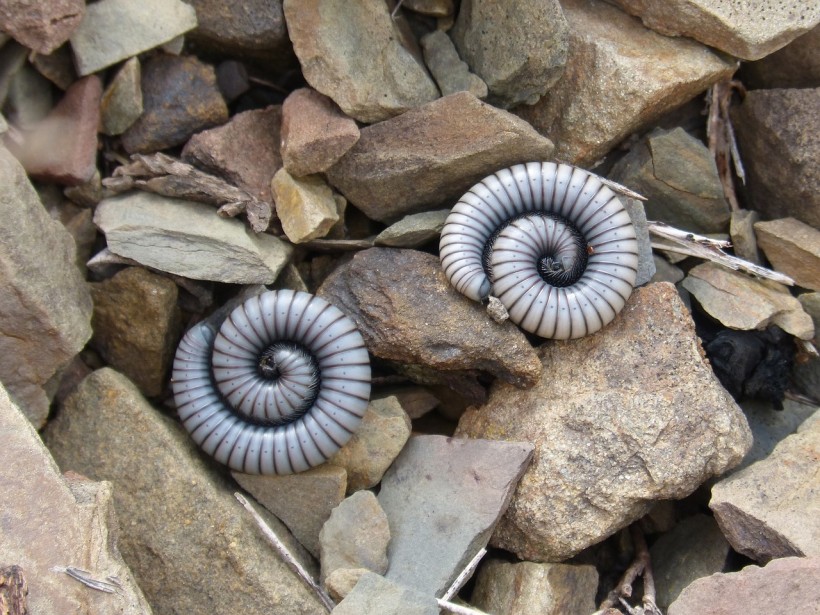Researchers found fossils of a tiny sea creature with a delicately preserved nervous system, which could solve a century-old debate on the evolution of arthropod brains. More so, the 525-year-old fossils may compel a science textbook to rewrite how brains evolved.
The study provides the first detailed description of the wormlike animal Cardiodictyon catenulum, which was found preserved in the rocks in Yunnan province in China. The tiny sea creature is about half an inch long and was initially discovered in 1984.

525-Million-year-Old Fossils of a Tiny Sea Creature With a Preserved Nervous System Solves Century-old Debate on Brain Evolution
Answer a Century-old Debate
Cardiodictyon belonged to an extinct group of animals called armored lobopodians, which were once abundant in the Cambrian period. According to Science Daily, loboipodians likely moved on the sea floor using their multiple soft, stubbly legs with no joints. Its closest relative in the modern world is velvet worms that primarily live in Australia, New Zealand, and South America.
Analyses of the fossils of Cardiodictyon reveal an animal with a segmented trunk with repeating arrangements of neural structures called ganglia. It is a contrast to its head and brain in which both lack evidence of segmentation.
Study co-lead Nicholas Strausfeld, a Regents Professor in the University of Arizona Department of Neuroscience, said that the anatomy was completely unexpected because the heads and brains of modern arthropods have been considered segmented. The findings resolve a long and heated debate about the original composition of arthropod brains.
Arthropods were the most species-rich group in the animal kingdom around the world. Their group consists of crustaceans, spiders, other arachnids, and some lineage that connects to the millipede and centipede.
Frank Hirth, a reader of evolutionary neuroscience at King's College London and the co-lead of the study, noted that biologists noted since the 1880s the segmented appearance of the worm's trunk is typical for arthropods and extrapolated them to the head.
But they found that neither the sea creature's head nor its brain was not segmented. That could mean the brain and nervous system evolved differently and separately.
READ ALSO: Sharks Fossil From China Sheds Light on Human Evolution
Oldest Fossilized Brain
The Cardiodictyon was part of the Chengjiang fauna with a well-preserved body and brain. its prominent parts were a series of triangular, saddle-shaped structures that defined each segment and serves as attachment points for their legs. Those fossils found on the rocks date back to the Cambrian period and Strausfel said that the oldest fossilized brain that they know.
SciTech Daily reported that it could mean those fossils could have also been the earliest arthropods that predate even trilobites, an iconic diverse group of marine arthropods that went extinct 250 million years ago.
Until recently, the common understanding was that brains do not fossilize. But the fossils show that despite its so small size, brains can be well-preserved in different fossilized arthropods.
They compared the fossils to other known fossils and living arthropods, like spiders and centipedes. They found a shared blueprint of brain organization that has been maintained since the Cambrian period. After comparing gene expressions to living species, Hirth said that they were able to identify a common signature of all brains and how they formed.
Three brain domains of Cardiodictyon are linked to a characteristic pair of head appendages, and one of the three parts of the anterior digestive system. They realized that each brain domain and corresponding features are specified by similar combination genes regardless of the species.
The findings of the study, titled "The Lower Cambrian Lobopodian Cardiodictyon Resolves the Origin of Euarthropod Brains" published in Science, have important implications when comparing the nervous system of arthropods with those ancient arthropods. it showed a similar distinct architecture of the forebrain and midbrain developing distinctly from the spinal cord.
RELATED ARTICLE: Scientists Find 500-Million-Year-Old Fossils That Might Solve Evolution Riddle
Check out more news and information on Archaeology on Science Times.














